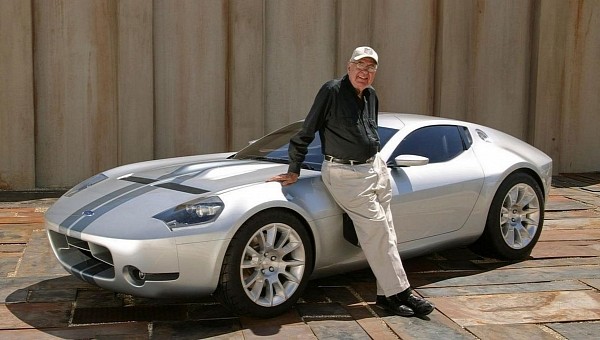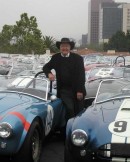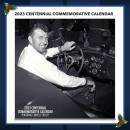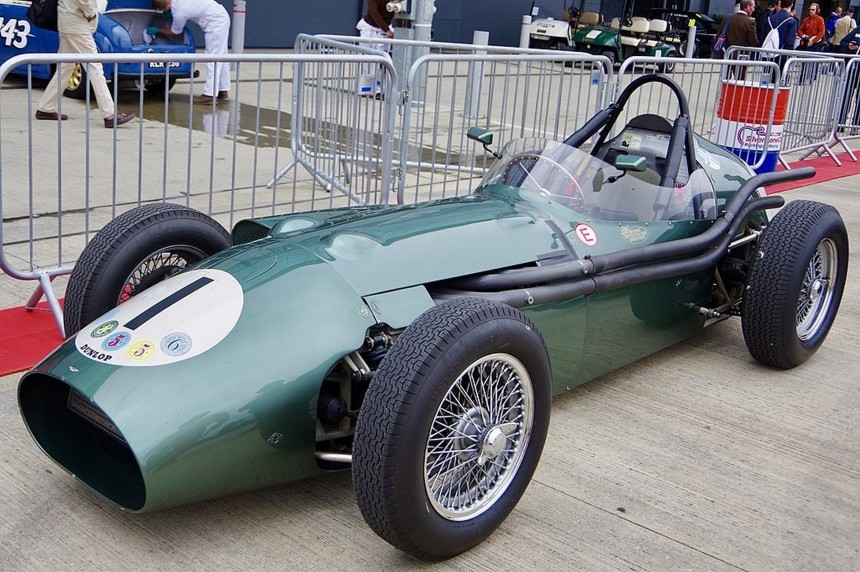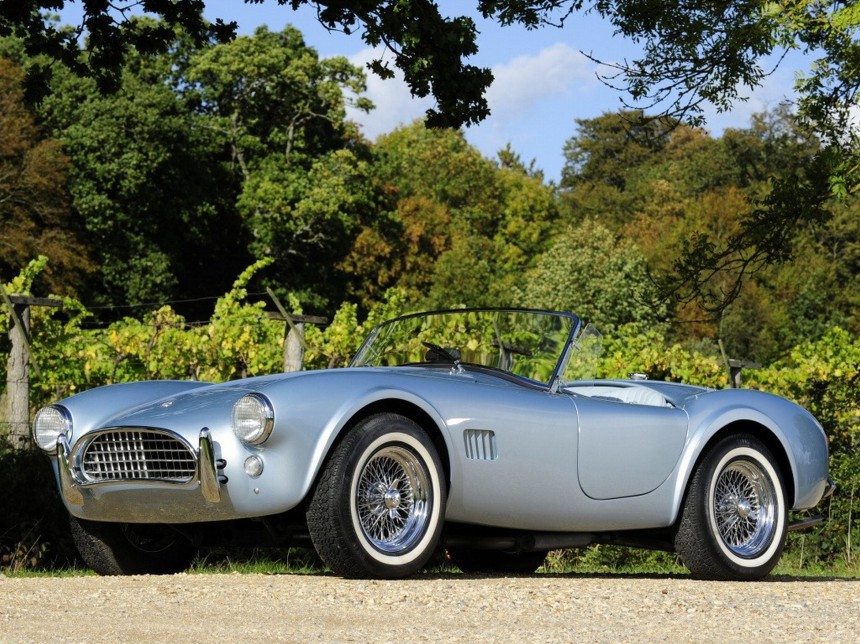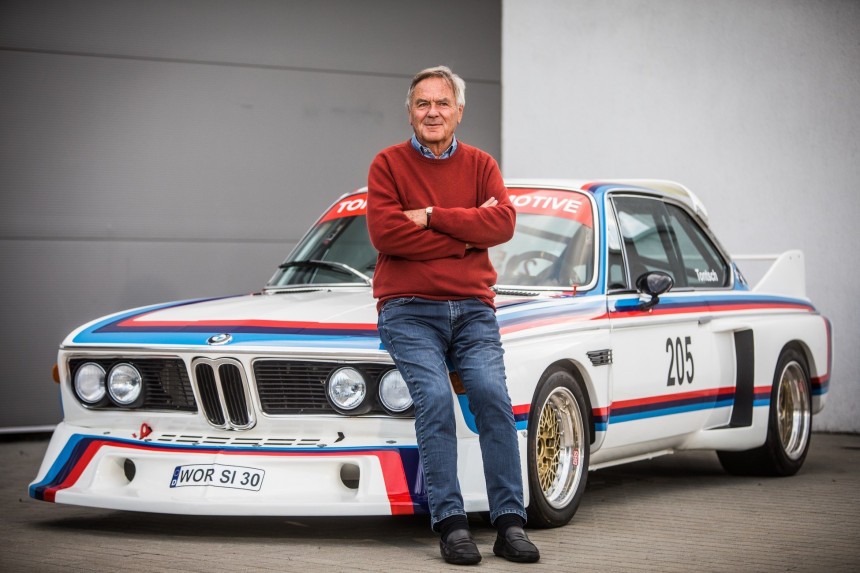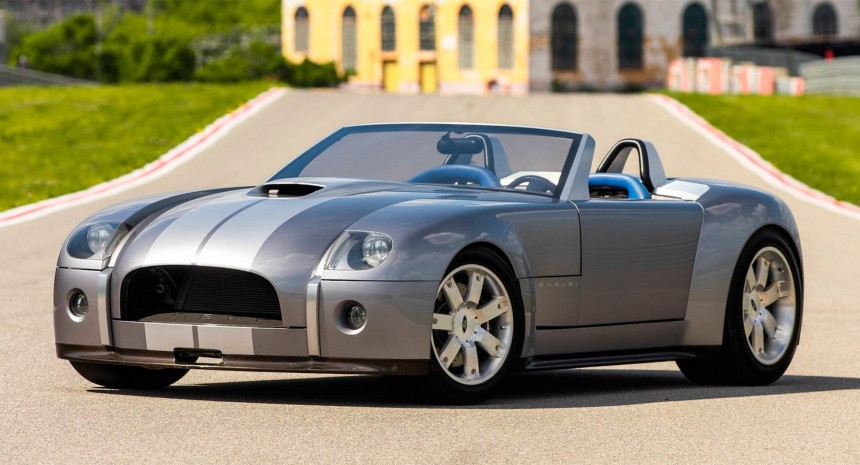Against all odds, Carroll Shelby became a legend not only because he won Le Mans but because he proved that when there's a will, there's a way. In addition, his life and career as a racing driver and a car builder still are inspirational for many people.
Carroll Shelby was born on January 11, 1923, in the small village of Leesburg, Texas. At that time, there were less than 300 people in that community, and there was a mailman among them by the name of Warren Hall Shelby, who was Carroll's father. He drove his mail truck around the dusty roads, and his son rode shotgun with him many times. Unfortunately for his young son, at the age of seven, he was diagnosed with a heart condition that didn't allow him to play soccer or any other physical activities. Still, he sneaked out a couple of times for some baseball throws.
At the same time, he and his family moved to Dallas, and new opportunities emerged from that. His father was no longer a mailman, and he could ride a bicycle around the block. And he did that until he was old enough to get his driver's license. That happened when he was just 14. His father, who also loved cars, had a 1934 Dodge. One day after the young Carroll took his license, he drove the three-year-old car on a four-lane road, and the boys in blue stopped him. He was doing 80 mph (129 kph) in a 30 mph (48 kph) zone. But that was him. Always wanted to go fast.
His driving skills were improved over the years in his Willys. But he still wanted to go fast, and that led him to the Georgia Institute of Technology in the Aeronautical Program. But that lasted only a short time. One month before the Pearl Harbor attack, in November 1941, he joined the United States Army Air Corps and served as a flight instructor and test pilot. Strangely, when he enlisted, the medical commission didn't notice his heart condition.
After the war, he was discharged, and with the money he earned, he tried to start his own dump truck business but went bankrupt. His call was not there. In the same area where he used to live was a small garage with racing cars. These were from a lesser-known brand at that time in the U.S., named Aston Martin. That's where the racing evolution of Carroll Shelby began. He was involved in the team, and in 1954, he raced at Le Mans. Unfortunately for him and the Aston Martin Lagonda team, the front axle gave up, and they threw the towel.
Speed was now in his bloodstream, and he just wanted to race again. So, in the following years, he entered Formula 1 with Maserati, scoring a couple of points. But the race of his life happened in 1959 at Le Mans. As he recalled in an interview, they won in front of Ferrari due to a better team, not a car. Enzo Ferrari was the kind of man who got involved in everything, and not all the time his decisions were adequate. So, Aston Martin won in 1959 with Carroll Shelby and Roy Salvatori at the wheel after 323 grueling laps.
He continued racing, but soon, due to his heart condition, he had to stop. One day, at the Laguna Seca race track, he had to take four nitroglycerin pills just to keep him going, and he was losing precious seconds every time he had to take medicine. Laguna Seca is a short track, with just eleven corners, and those seconds he lost, he couldn't recover. So he decided to stop racing and just build cars.
He started racing at the age of 29 in a British car. His win at Le Mans was in a British racer, so it's understandable why he was attracted to the nimble roadsters that came from UK. So, when Carroll Shelby found out that the British automaker AC had trouble finding an engine for its roadsters, he arranged a deal with Ford and the British factory, and soon, a small block built by the American automaker found its place under an AC hood.
Carroll Shelby said that to adapt the vehicle, he had to replace every nut and bolt on the car. But, in the end, the nimble roadster took shape, and he fulfilled his promise to Ford's management that he would build a Ford-engined car that could eat the Corvette for breakfast. That was the beginning of the AC Cobra. Suddenly, the little British roadster with the American small block was on everybody's lips. In addition, in 1964, a 17-year-old songwriter wrote the "Hey Little Cobra" song about the car that jumped at the top of the American billboard charts. Shelby also had the brilliant idea to advertise the car in Playboy magazine.
Just to have an idea about the kind of company Cobra was: people came from all over the world to work for Carroll Shelby. It was that big! And then, in 1964, the Mustang appeared. Lee Iacocca didn't forget about Mr. Cobra and asked him to create a sportscar out of the pony car.
The muscle car era was on the rise, and Ford wanted a vehicle to beat the Corvette in the SCCA races. Still, the Association didn't want to consider the Mustang as a two-seat sports car. But Carroll Shelby made it happen. He never settled down and never took a "No" for an answer. But he had a very wise rule of life: always know what you don't know and don't get there if you're not up to it.
His team jumped on the project of transforming the Mustang into a sports car. They burned the midnight oil, and the GT350 was born. Even though it was more expensive than the Corvette, people went mad about the car. It was that good. By tuning the suspension, installing bigger brakes, and working on the engine, the first Mustang Cobra was a blast to drive, and thousands of people wanted it.
The beautiful story between Ford and Shelby didn't end there, though. His target was to beat Ferrari at Le Mans. Not with himself at the wheel since he has already done that, but with his cars. But he soon realized that his open-top Cobra couldn't match Ferrari's speed on the Mulsanne straight: he needed a closed, aerodynamic bodywork. For that, he asked Pete Brock to create a bodywork, and Cobra fine-tuned the vehicle with a little help coming from engineers who worked for Convair aircraft. The result was stunning. Powered by the big-block 427 Ford engine, the Cobra Daytona Coupe reached 315 kph (196 mph), beating Ferrari's speed. And he won its class in 1963 with two other legendary racing drivers at the wheel, Bob Durant and Dan Gurney.
But Shelby Cobra was more than just a small sports car maker. It was a school for future talents both in racing and industry. One of the best examples was Jochen Neerpasch, who raced for the American team in 1964 at Le Mans. Unfortunately, the team was disqualified after 10 hours due to a technical issue. Later, Neerpasch founded BMW Motorsport, so the iconic BMW M1 was born.
Two years later, Ford won at Le Mans with the mighty GT40, helped by Shelby American. That triple victory was not only in front of Ferrari, who made it in eighth place but also in front of the Porsche Team.
Carroll Shelby succeeded in the automotive world by doing what he loved most: building race cars. Two decades ago, in 2002, I interviewed him over the phone. I asked him if he would answer a call from Ford to start making race cars together again. His answer was surprisingly quick, "I'd jump right in!" He wasn't young at age anymore, but his spirit was as strong as ever.
And he was right. In 2004, he made the last car together with Ford, the 2004 Ford Shelby V-10 Cobra. This time, the target was not the Corvette but another American V10 monster: the Viper. Unfortunately, that was a one-of-a-kind vehicle that never reached production due to the world financial crisis. Yet, it proved that even at 81 years old, Carroll Shelby was still perfectly capable of creating iconic cars.
That's why we are raising our glasses, taking off our hats today, and honoring the one and only Mr. Carroll Shelby. The one who, in 2008, received the Automotive Executive of the Year Award.
The Cobra name is still shown on the most spectacular Mustangs on the roads, carrying over the legacy of this legendary man that was Carroll Shelby.
At the same time, he and his family moved to Dallas, and new opportunities emerged from that. His father was no longer a mailman, and he could ride a bicycle around the block. And he did that until he was old enough to get his driver's license. That happened when he was just 14. His father, who also loved cars, had a 1934 Dodge. One day after the young Carroll took his license, he drove the three-year-old car on a four-lane road, and the boys in blue stopped him. He was doing 80 mph (129 kph) in a 30 mph (48 kph) zone. But that was him. Always wanted to go fast.
His driving skills were improved over the years in his Willys. But he still wanted to go fast, and that led him to the Georgia Institute of Technology in the Aeronautical Program. But that lasted only a short time. One month before the Pearl Harbor attack, in November 1941, he joined the United States Army Air Corps and served as a flight instructor and test pilot. Strangely, when he enlisted, the medical commission didn't notice his heart condition.
After the war, he was discharged, and with the money he earned, he tried to start his own dump truck business but went bankrupt. His call was not there. In the same area where he used to live was a small garage with racing cars. These were from a lesser-known brand at that time in the U.S., named Aston Martin. That's where the racing evolution of Carroll Shelby began. He was involved in the team, and in 1954, he raced at Le Mans. Unfortunately for him and the Aston Martin Lagonda team, the front axle gave up, and they threw the towel.
He continued racing, but soon, due to his heart condition, he had to stop. One day, at the Laguna Seca race track, he had to take four nitroglycerin pills just to keep him going, and he was losing precious seconds every time he had to take medicine. Laguna Seca is a short track, with just eleven corners, and those seconds he lost, he couldn't recover. So he decided to stop racing and just build cars.
He started racing at the age of 29 in a British car. His win at Le Mans was in a British racer, so it's understandable why he was attracted to the nimble roadsters that came from UK. So, when Carroll Shelby found out that the British automaker AC had trouble finding an engine for its roadsters, he arranged a deal with Ford and the British factory, and soon, a small block built by the American automaker found its place under an AC hood.
Carroll Shelby said that to adapt the vehicle, he had to replace every nut and bolt on the car. But, in the end, the nimble roadster took shape, and he fulfilled his promise to Ford's management that he would build a Ford-engined car that could eat the Corvette for breakfast. That was the beginning of the AC Cobra. Suddenly, the little British roadster with the American small block was on everybody's lips. In addition, in 1964, a 17-year-old songwriter wrote the "Hey Little Cobra" song about the car that jumped at the top of the American billboard charts. Shelby also had the brilliant idea to advertise the car in Playboy magazine.
The muscle car era was on the rise, and Ford wanted a vehicle to beat the Corvette in the SCCA races. Still, the Association didn't want to consider the Mustang as a two-seat sports car. But Carroll Shelby made it happen. He never settled down and never took a "No" for an answer. But he had a very wise rule of life: always know what you don't know and don't get there if you're not up to it.
His team jumped on the project of transforming the Mustang into a sports car. They burned the midnight oil, and the GT350 was born. Even though it was more expensive than the Corvette, people went mad about the car. It was that good. By tuning the suspension, installing bigger brakes, and working on the engine, the first Mustang Cobra was a blast to drive, and thousands of people wanted it.
The beautiful story between Ford and Shelby didn't end there, though. His target was to beat Ferrari at Le Mans. Not with himself at the wheel since he has already done that, but with his cars. But he soon realized that his open-top Cobra couldn't match Ferrari's speed on the Mulsanne straight: he needed a closed, aerodynamic bodywork. For that, he asked Pete Brock to create a bodywork, and Cobra fine-tuned the vehicle with a little help coming from engineers who worked for Convair aircraft. The result was stunning. Powered by the big-block 427 Ford engine, the Cobra Daytona Coupe reached 315 kph (196 mph), beating Ferrari's speed. And he won its class in 1963 with two other legendary racing drivers at the wheel, Bob Durant and Dan Gurney.
Two years later, Ford won at Le Mans with the mighty GT40, helped by Shelby American. That triple victory was not only in front of Ferrari, who made it in eighth place but also in front of the Porsche Team.
Carroll Shelby succeeded in the automotive world by doing what he loved most: building race cars. Two decades ago, in 2002, I interviewed him over the phone. I asked him if he would answer a call from Ford to start making race cars together again. His answer was surprisingly quick, "I'd jump right in!" He wasn't young at age anymore, but his spirit was as strong as ever.
And he was right. In 2004, he made the last car together with Ford, the 2004 Ford Shelby V-10 Cobra. This time, the target was not the Corvette but another American V10 monster: the Viper. Unfortunately, that was a one-of-a-kind vehicle that never reached production due to the world financial crisis. Yet, it proved that even at 81 years old, Carroll Shelby was still perfectly capable of creating iconic cars.
The Cobra name is still shown on the most spectacular Mustangs on the roads, carrying over the legacy of this legendary man that was Carroll Shelby.
